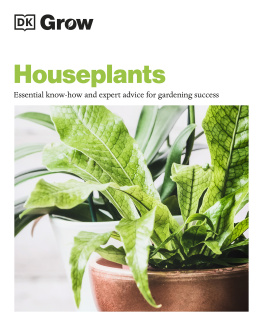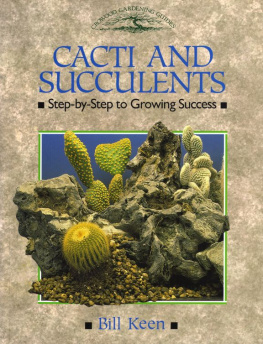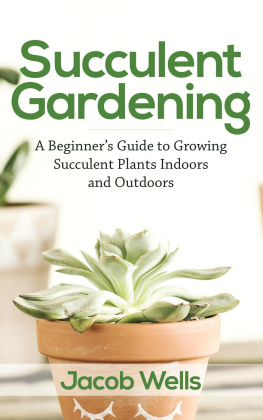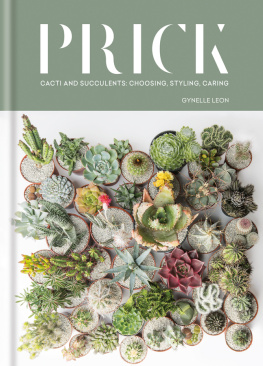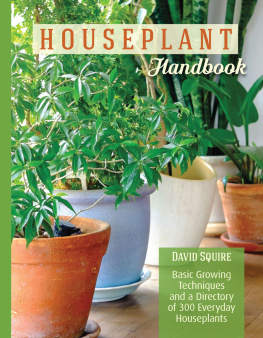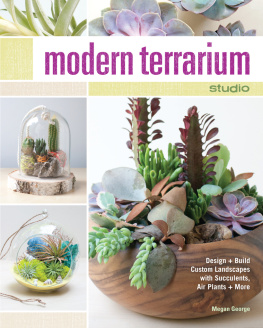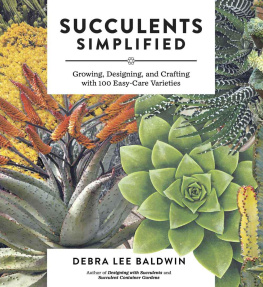Contents
Guide
Page List

Succulents at Home
Choosing, Growing, and Decorating with the Easiest Houseplants Ever
John Tullock

dedication
This book is dedicated to gardeners everywhere, without whom
the world would be less beautiful.

Contents

Trends in interior design come and go. I am fortunate to have been around when houseplants enjoyed a resurgence of their Gilded Age popularity in the 1970s, as well as today, when enhancing our indoor spaces with living plants is once again all the rage. As our world becomes increasingly urbanized and manufactured, we feel less and less connected to the natural world in our daily lives. Bringing the outdoors in by growing houseplants offers a great way to brighten a room, clear the air, relieve stress, and improve ones outlook.
The purpose of this book is to help anyone get started growing succulents indoors. While some succulent varieties can survive outdoors in the temperate zone, most are not frost hardy. I will therefore limit coverage to succulents that thrive as houseplants. The plants included here will benefit from spending the warmer months outside, if possible, but should be brought indoors again before the first frost.
Houseplant enthusiasts quickly learn that some groups of plants are better suited than others to indoor cultivation. Success with any plantusually defined by its vigorous growth and periodic floweringdepends upon providing it with a reasonable facsimile of the conditions it would encounter in nature. For succulents, these conditions are easily met in the indoor environment. For some other types of plants, that is not the case. For example, low humidity indoors is often cited as a stress factor for tropical houseplants from rainforest habitats, such as some philodendrons and orchids. Succulents thrive in humidity levels that are most comfortable for humans, and even the warm, dry air from central heating suits them fine. Some houseplants require regular attention lest they suffer from drying out. Succulents are literally designed for drought tolerance. Succulents also do not need frequent repotting or fertilization in order to thrive. Most need repotting only every few years, and feeding is necessary only a few times during the growing season. The vast majority of succulents thrive in arid conditions and thus can be maintained indoors in good condition with less bother than most other plant types. The ability to tolerate dry soil between infrequent periods of rainfall means that succulents growing in containers do not require daily attention to prevent them from drying out. And their adaptation to poor, mineralized soils means succulents can cope with low levels of fertilization that would cause many other plants to turn yellow and die.

Taken together with their intriguing forms, subtle color palette, and slow growth rate, their ease of culture makes succulents the best choice for an indoor gardener with a busy schedule. Succulents, therefore, might just be some of the most satisfactory houseplants available.
Plants that have the ability to store water in their stems or leaves against periods of drought compose the arbitrary group known as succulents. Just because two plants resemble each other in their water storage abilities does not mean they are necessarily related botanically. Because the traits shared by all these plants are the result of adaptations to arid environments, we find succulent members in several of the plant families recognized by botanists. For example, both cacti and euphorbias store water in their stems and both have spines, but they are only distant cousins botanically. Botanical distinctions are based largely upon the structure of flowers. Thus, the string of pearls plant, a popular succulent, reveals its affinity to other members of the aster family when it blooms. The flowers are structurally similar to other members of the family, such as dandelions. Flowers are adapted to facilitate pollination and thus the perpetuation of a given plant species. They do not function as water storage organs. Having leaves and/or stems capable of water storage is the trait that makes a plant a succulent, regardless of its floral anatomy.
Not all plants that store water should be considered succulents, either. For our purposes, I have limited the definition to plants that use their green leaves or stems for water storage. Many plants are capable of storing water in their fleshy roots or in underground stems called tubers, but we do not consider them to be succulents because the storage organs lie hidden beneath the soil. The technical name for this group of plants whose subterranean structures store water is geophytes. However, some geophytes, which produce a structure known as a caudex, can be considered succulents. The caudex is an above-ground storage organ derived from the stem, the root, or a combination of both. Because some of these plants, called caudaciforms, are relatively common in the horticultural trade, I have included them here.
I should also note that plants can experience a lack of water amid its seeming abundance. Some succulents are adapted for life in rainforest conditions, where they grow attached to trees or rocks with exposed roots that dry out rapidly after each rain. This group of succulents requires frequent watering but must not be allowed to sit in soggy soil. Several interesting members of the cactus family fall into this category and are discussed in a separate section explaining their peculiar growing requirements. Unlike desert cacti, these atypical cacti need frequent watering and feeding. Nevertheless, caring for them is easy and straightforward, and the reward is a spectacular bloom show. Thus, they have been popular houseplants for decades.

Succulent Plant Families
Unsurprisingly, the majority of succulents come from a limited number of plant families. This makes sense because the ability to develop the necessary adaptations for water storage is inherited. Plants lacking the various genes that confer these adaptations for water storage ability are at a disadvantage in an arid environment. Plants that are genetically capable, the early adopters of certain adaptations, as it were, come to dominate the flora in a given location. The species covered in this book belong to ten families, but the majority of species are in the stonecrop and cactus families, Crassulaceae and Cactaceae, respectively, with the remainder about evenly distributed among the other eight families.
Some succulent families are widespread, while others have an extremely limited range. For example, stonecrops (Crassulaceae) range from Africa and Europe east through Asia, and are also found in North America. On the other hand, 97 percent of species of ice plants (Aizoaceae) are found only in southern Africa. Plant collectors have brought a genuinely diverse array of succulent plants into the horticultural trade over the last couple of centuries, so that wild populations, thankfully, are no longer the source of plants in commerce. Overzealous collecting for the commercial trade has in some cases threatened the survival of wild succulent species. Wildlife officials recently seized a large number of succulent plants illegally harvested from the California coast. These plants were destined for collectors in China and Southeast Asia. Because some succulents grow very slowly, nursery-propagated plants may be scarce and expensive, creating a market for illegally harvested specimens. But not all succulents present this problem for growers. Indeed, many succulents are easy to propagate, as you will learn in , making them excellent candidates for large-scale production of plants for the horticulture trade. Certain species are sufficiently adaptable that they will growor at least survivewith indifferent care and downright neglect. As one might expect, these species have come to dominate the trade and are the varieties you are most likely to see when shopping your local garden center. Easy-care succulents also frequently turn up in displays at big-box retailers and supermarkets. Some, such as the Christmas cactus, have become holiday season staples. All of these commonly cultivated varieties are also great plants for beginners, being forgiving of an occasional mistake in cultivation.



